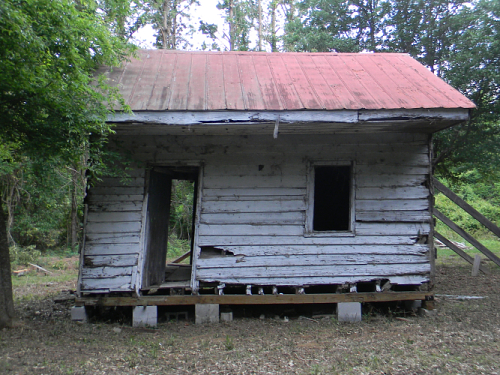Source
This text is in the public domain. Retrieved from https://nmaahc.si.edu/object/nmaahc_2013.57.
Text Dependent Questions
- QuestionWhat stands out to you about this cabin?AnswerAnswers might include the simplicity of the structure, the minimal space of the structure, the exposure to the elements, the deterioration of the structure over time, etc.
- QuestionWhat does this cabin demonstrate about the experience of enslaved persons?AnswerThis cabin demonstrates that enslaved persons lived in simple conditions that lacked many basic comforts of life, that even the most basic necessities of life were barely provided. It demonstrates the absurdity of traditionalist and apologist arguments that enslavement offered comfortable and happy living conditions for enslaved persons.
- QuestionWhat does this cabin demonstrate about the interests and motivations of enslavers?AnswerThis cabin demonstrates that enslavers sought to provide enslaved persons with a minimum of comfort in their lives—only the basic necessities of life required to keep them alive so that enslavers could reap the largest profits. Even in those basic necessities, such as shelter, this cabin demonstrates that enslavers provided enslaved persons with the bare minimum required.
- QuestionWhy is it important to preserve structures such as this?AnswerPhysical artifacts and structures serve as powerful reminders of the realities of the past, often beyond the capabilities of written sources. Reading descriptions of the quarters of enslaved persons requires a reader to imagine. A physical artifact such as this cabin—even if it underwent some structural changes after emancipation and maintenance since then—remains a powerful source for our understanding of the system of slavery in the United States.
Reveal Answers
